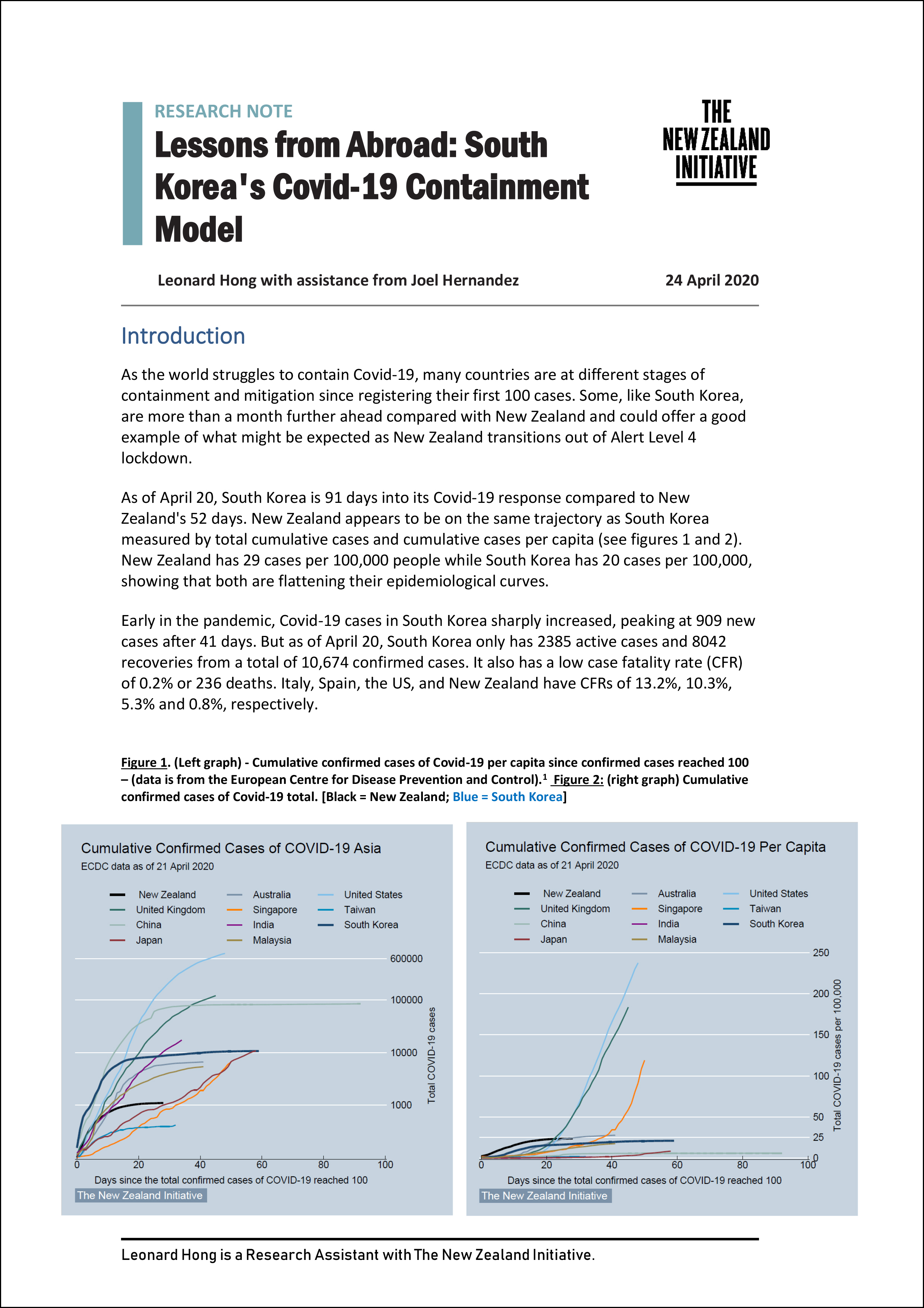As the world struggles to contain Covid-19, many countries are at different stages of containment and mitigation since registering their first 100 cases. Some, like South Korea, are more than a month further ahead compared with New Zealand and could offer a good example of what might be expected as New Zealand transitions out of Alert Level 4 lockdown.
As of April 20, South Korea is 91 days into its Covid-19 response compared to New Zealand's 52 days. New Zealand appears to be on the same trajectory as South Korea measured by total cumulative cases and cumulative cases per capita. New Zealand has 29 cases per 100,000 people while South Korea has 20 cases per 100,000, showing that both are flattening their epidemiological curves.
Early in the pandemic, Covid-19 cases in South Korea sharply increased, peaking at 909 new cases after 41 days. But as of April 20, South Korea only has 2385 active cases and 8042 recoveries from a total of 10,674 confirmed cases. It also has a low case fatality rate (CFR) of 0.2% or 236 deaths. Italy, Spain, the US, and New Zealand have CFRs of 13.2%, 10.3%, 5.3% and 0.8%, respectively.
Although the South Korean government failed to stop the initial transmission of the virus from overseas, it speedily dealt with the first Shincheonji's clusters in Daegu while maintaining an open economy, effective border controls, high-level diagnostic testing, strict enforcement of Covid-19 rules, efficient contact tracing and government transparency. It even avoided a national lockdown by giving local governments the authority to shut only parts of their districts.
The effectiveness of these policies was boosted by public solidarity, civil compliance, the prominent use of face masks and the widely understood lessons of previous virus outbreaks.
This report outlines seven key examples of South Korea's pandemic approach and shares the lessons for New Zealand.
Research Note: Lessons from abroad: South Korea's Covid-19 Containment Model
23 April, 2020







